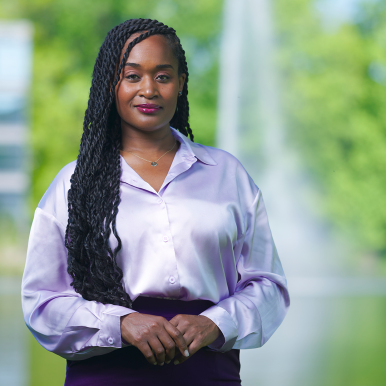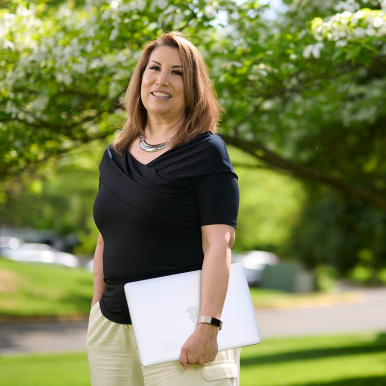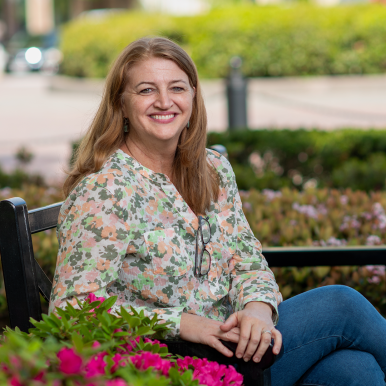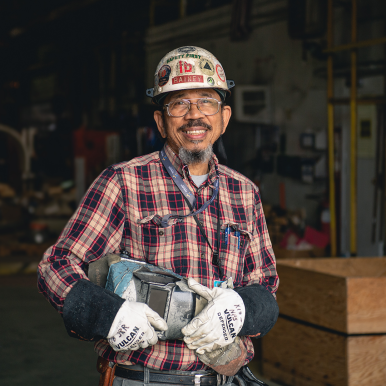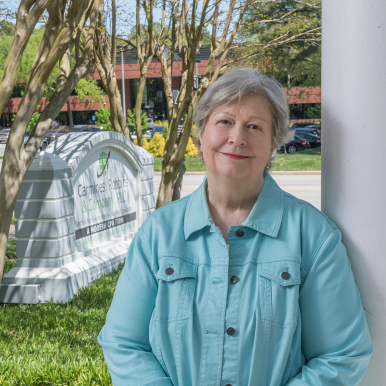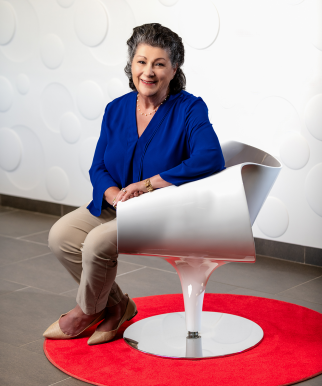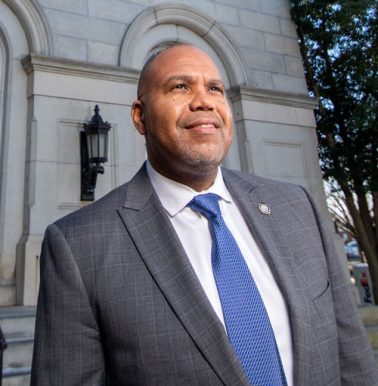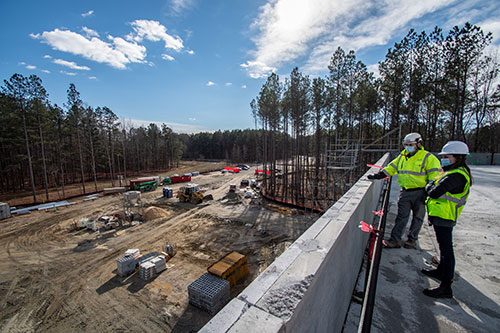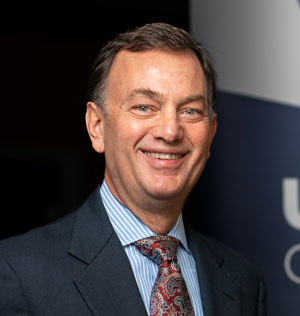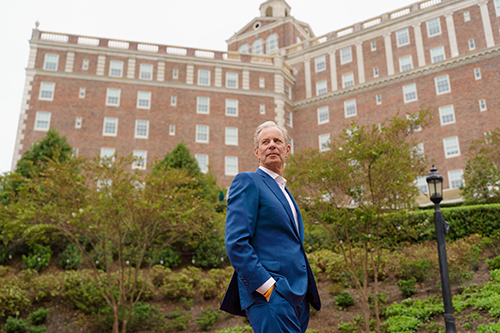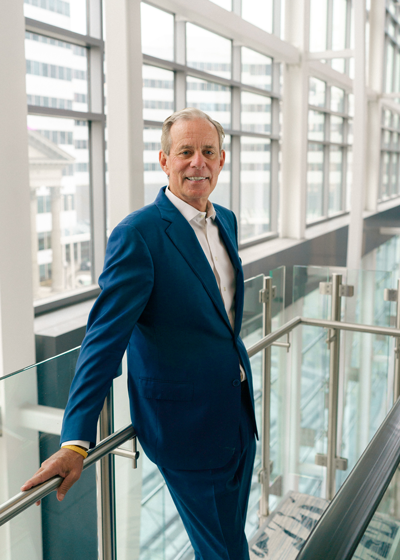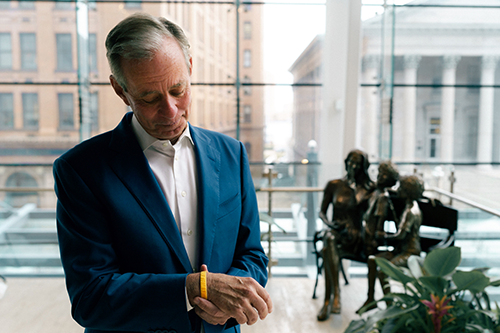In June, Tesla shareholders reaffirmed their intention to award the largest CEO compensation package in history to the automotive company’s controversial leader, Elon Musk.
Valued as high as $56 billion, the deal had previously been thrown out by a Delaware judge, citing a failure by members of Tesla’s board to disclose conflicts of interest with Musk. But voters representing 72% of Tesla’s voting shares — excluding those of Musk and his brother — ultimately voted to uphold the deal, which was based on Tesla’s meeting a mix of market capitalization and financial goals.
Musk’s high-profile compensation deal has led to a massive reshaping of the CEO pay landscape in recent years. Unlike standard employees, CEOs are compensated based on performance, receiving most of their income through equity awards.
Last year, payouts to chief executives reached new heights as stock awards swelled the value of compensation packages. And during the past five years, three dozen CEOs of S&P 500 companies have made at least $15.7 million annually, a new record, in what The Wall Street Journal has dubbed the “supersize era.” Most S&P 500 CEOs that the Journal studied received year-over-year raises of at least 9%; a quarter received at least 25%.
Stock awards made up 70% of pay packages for CEOs in 2023, with the median value of stock awards jumping 10.7% to $9.4 million, according to California-based corporate leadership data firm Equilar.
“Last year’s stock market was doing great, and that’s one of the main reasons why the CEO compensation packages increased that much,” says Lei Gao, associate professor of finance at George Mason University’s Costello College of Business.
Boeing, Boeing, gone
So, how does Virginia stack up?
A study by Equilar tallied salary, bonus, perks, stock awards, stock option awards, long-term awards and other compensation of 56 Virginia-based public companies with annual revenues of $1 billion or more; it found that the median total compensation for Virginia CEOs who had been on the job for more than two years grew 10.4% in 2023 over the previous year.
That’s lower than the national median compensation for S&P 500 chief executives, which rose by 12.6%.
Virginia’s top-compensated CEO in 2023 was David L. Calhoun, the embattled former president and CEO of Arlington-based aerospace and defense company Boeing. Calhoun’s compensation package last year was $32.77 million, a 46% increase from 2022, when he earned $22.48 million. While his salary and bonus remained flat at $1.4 million, he received $30.23 million in equity awards, $13 million more than he received in 2022 and nearly $8 million more than Virginia’s second-highest compensated CEO.
Calhoun took over as CEO of the Fortune Global 500 company in 2020; his predecessor, Dennis Muilenburg, was fired in the aftermath of two Boeing 737 jet crashes that killed 346 people. Under Calhoun’s tenure, the 737 Max had continued issues, including the highly publicized blowout of a door plug panel mid-flight in January. Additionally, issues with a Boeing Starliner spacecraft this year left two astronauts stranded aboard the International Space Station; they’re not expected to come home until February 2025 — on competitor SpaceX’s craft. Calhoun was succeeded as Boeing’s CEO in August by Kelly Ortberg, former president and CEO of Rockwell Collins.
“You need someone who can handle these disasters well,” explains Gao of Calhoun’s high compensation. “We want to get the best people to handle those companies in crisis, and without a decent pay package, it’s really hard to get those people.”
Last year, Boeing, which employs roughly 170,000 people worldwide, reported $22.02 billion in revenue, growing 10% over the previous year. In July, Boeing announced that it would buy back Boeing spinoff company Spirit AeroSystems in a $4.7 billion, all-stock transaction.
Virginia’s second highest compensated CEO for 2023 was Richard D. Fairbank of McLean’s Capital One Financial. Fairbank’s compensation package last year was $27.38 million. Fairbank took the No. 2 spot despite the fact that he hasn’t received a base salary since 1997. His total compensation actually decreased 1% from 2022, though he received a slight raise in bonus pay, from $4.2 million in 2022 to $5 million. His equity awards totaled $22.26 million.
Last year, the Fortune 500 credit card giant’s total revenue increased 7.4% to $36.8 billion. In his annual report to shareholders, Fairbank wrote that “credit card performance was solid, even as consumer credit losses normalized from historic lows seen during the pandemic.” He stated that Capital One shares were up 41% in 2023, with a total shareholder return of 44.3%. Additionally, its flagship suite of credit cards — Venture, Quicksilver and SavorOne — continued to enjoy solid growth, and Capital One launched two new lounges at Denver and Dulles airports.
But the biggest news came in February, when Capital One announced plans to acquire Discover Financial in an all-stock deal worth $35.3 billion. If approved by federal regulators, the merger would make Capital One the biggest American credit card issuer by balance owed and the sixth largest American bank by assets. In July, two Capital One customers filed a potential class action lawsuit against the plan, stating that it would drive up prices and reduce competition.
Virginia’s third-highest compensated CEO last year was Christopher J. Nassetta, president and CEO of Fortune 500 hospitality company Hilton Worldwide Holdings, headquartered in McLean. Nassetta received $26.56 million, a 13% increase from the $23.53 million he earned in 2022. His equity award was also the third highest, after Calhoun and Fairbank, at $21.75 million.
Hilton Worldwide reported $10.24 billion in revenue in 2023, up from $8.77 billion in 2022. The company’s revenue has been on the rise since a 2020 pandemic low of $4.31 billion; in 2019, the company reported revenue of $9.45 billion.
In its annual report, Hilton stated that it had added 1,000 hotels to its future pipeline in 2023, marking 3,300 hotels in development, a record for the company. In an earnings release, Hilton reported a systemwide occupancy rate of 71.8% in 2023, up 4.6% from the previous year.
In April, Hilton announced that it would acquire a majority controlling interest in Sydell Group, owner of NoMad Hotels, in an effort to expand the luxury lifestyle brand with 100 new hotels worldwide.
Female CEO pay stays high
CEOs saw record gains last year, in part because 2022 was a rough year for CEO pay.
“There wasn’t much growth that year, partly because of what was happening with the market in terms of supply chain issues and fears of a recession, but as we came out of 2022 and into 2023, a lot of those concerns were cleared up,” explains Courtney Yu, Equilar’s director of research. “While there were the beginnings of inflation concerns in 2023, it was still a pretty good year for the stock market, and CEOs were awarded accordingly.”
Nationally, the highest-paid CEO at a publicly traded company was Hock E. Tan of California-based semiconductor manufacturer Broadcom, who received a pay package totaling $161.8 million in 2023.
The biggest increase in compensation for a Virginia CEO in Equilar’s study was Carey A. Smith of Parsons, the Centreville-based defense contractor. Smith’s compensation increased 167% year-over-year, from $6.97 million to $18.58 million. The bulk of her pay raise came through equity awards totaling $15.22 million. Smith has been with Parsons for eight years, serving as president since 2019, CEO since 2021 and chair since 2022.
The biggest drop in CEO compensation was Timothy J. O’Shaughnessy of Arlington conglomerate Graham Holdings. O’Shaughnessy saw a 50% decrease in overall compensation, from $3.64 million in 2022 to $1.75 million last year.
Of the 56 top-earning publicly traded Virginia companies in Equilar’s study, four were helmed by women: Kathy J. Warden of aerospace and defense contractor Northrop Grumman; Phebe Novakovic of aerospace and defense contractor General Dynamics; Smith of Parsons; and Toni Townes-Whitley of federal contractor Science Applications International Corp. (SAIC).
Warden and Novakovic ranked fourth and fifth, respectively, for total compensation among Virginia CEOs. Warden’s compensation was $23.53 million, and Novakovic’s was $22.58 million. Smith pulled in $18.58 million and was ranked seventh overall, while Townes-Whitley was 13th with $10.99 million.
According to Equilar, median pay for female CEOs at S&P 500 companies outpaces that of men by 7.7%; women made up 25 of the 341 chief executives in its study. Overall, S&P 500 female executives were awarded a median pay package of $17.6 million.
In a state-by-state comparison of S&P 500 CEOs, Virginia led the pack, with its executives receiving a median pay package of $21.9 million, according to Equilar. Still, this takes only S&P 500 companies into account; if a state had a lone S&P 500 company with a highly compensated CEO, it could feasibly put that state at the top of the list.
Yu says that Virginia CEOs generally make less money than those in other states because of the type of industries the state has. Where the median pay last year for Virginia’s CEOs was $7.3 million, the S&P 500’s was $16.3 million nationally.
“Thirty percent of the companies in this Virginia study are part of the industrial sector, which doesn’t necessarily lend itself to being known for high CEO compensation,” Yu says. “That’s why you see such a difference in the median values for total compensation between Virginia companies and the S&P 500.”
Pay disparity continues to grow
While CEO pay is up, the way that their compensation is publicly reported has undergone a recent change.
In August 2022, the U.S. Securities and Exchange Commission announced new disclosure rules related to CEO pay. The rules state that companies must now disclose how much CEO stock holdings increase when the market rises. According to Gao, this change should provide more transparency when it comes to how CEOs are compensated and stoke additional investor confidence.
Yu says the change was not factored into Equilar’s study of CEO pay in Virginia, as the study concerns new compensation, not previous awards.
“It’s to help companies actually get a more full picture as to how an executive’s wealth is changing,” explains Yu of the change. “You could see a lot of differences in how equity changes.”
In recent years there have been growing concerns about the pay gap between CEOs and average employees, with some critics arguing that this difference is a powerful driver of economic inequality. When the stock market does well, this difference is heightened, as CEO pay rises while employee wages largely stay the same.
Citing findings from Institutional Shareholder Services, the Financial Times reported in June that median chief executive pay at S&P 500 companies rose by 12% in 2023, outpacing worker pay at the fastest rate in 14 years.
“The growth that we see in CEO compensation usually far outgrows the pace at which the median employee wage increases,” Yu says. “As we see higher and higher CEO compensation numbers, we tend to see that the CEO pay ratio increased more, because we’re not seeing as much growth with the median employee pay as we see with CEO pay.”
Equilar’s study of Virginia companies found a wide range of pay ratios, from 3,083:1 to 4:1. Freddie Mac’s former CEO, Michael J. DeVito, who left in March, earned $651,000 total compensation, while median worker pay was $168,105, the state’s lowest disparity. The largest disparity was Richmond-based leaf tobacco supplier Universal Corp., which heavily employs seasonal part-time laborers from developing countries; the average Universal employee earned just $1,711 annually, 0.035% of the $4.82 million earned by Universal CEO George C. Freeman.
Looking ahead, Yu predicts further increases in total chief executive compensation, usually through increases in equity awards.
“Barring another pandemic or barring another fear of recession, typically compensation tends to grow every year,” he says. “It will just be a matter of how much.”


